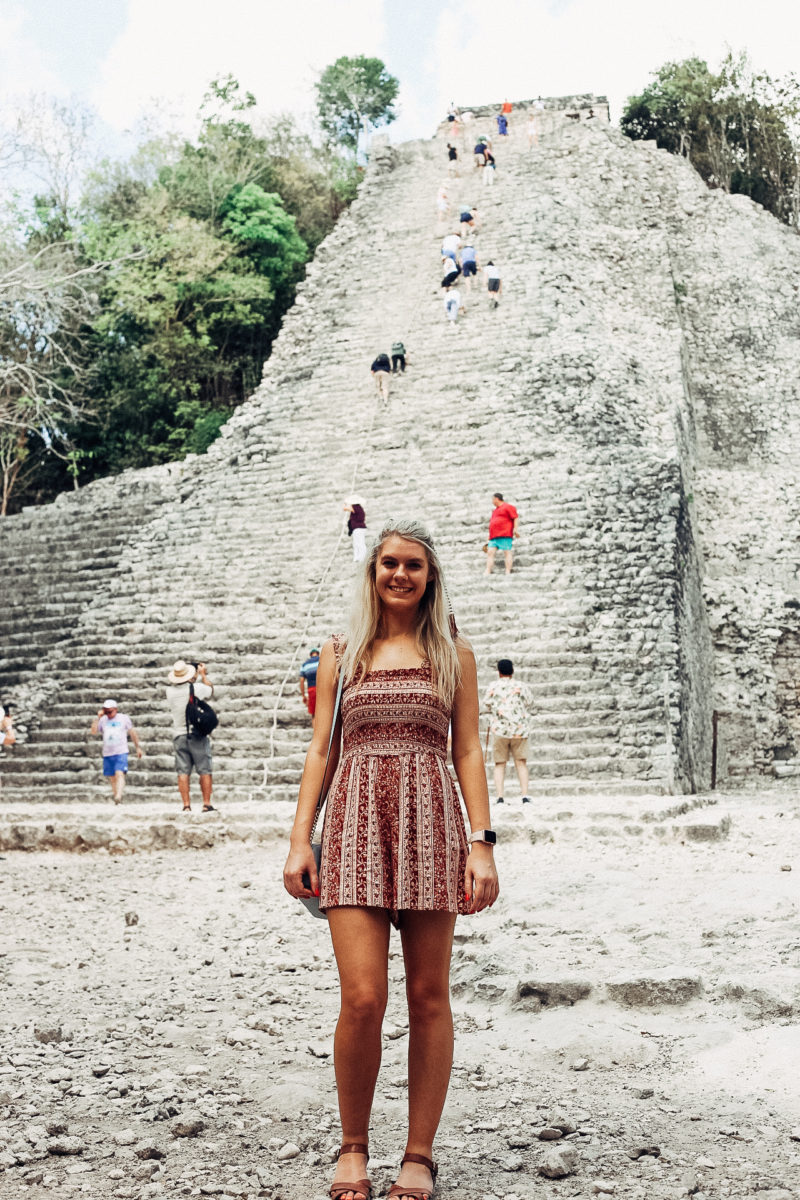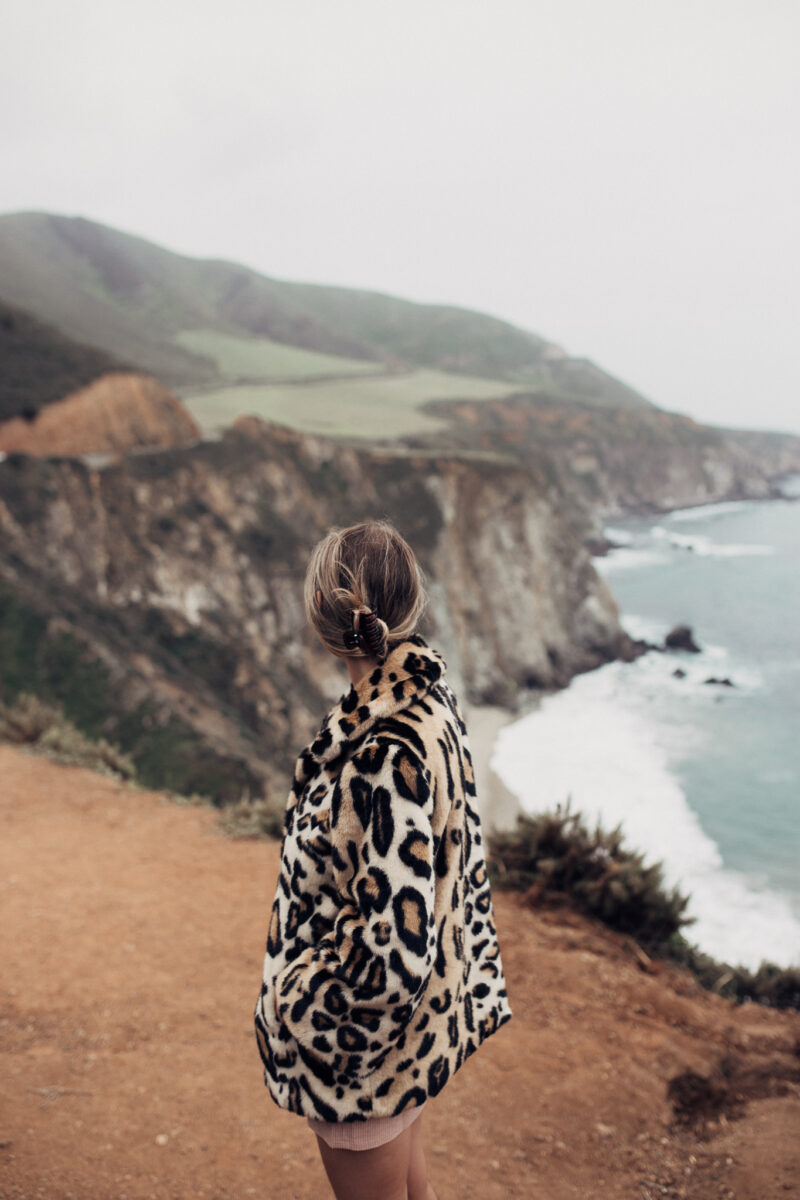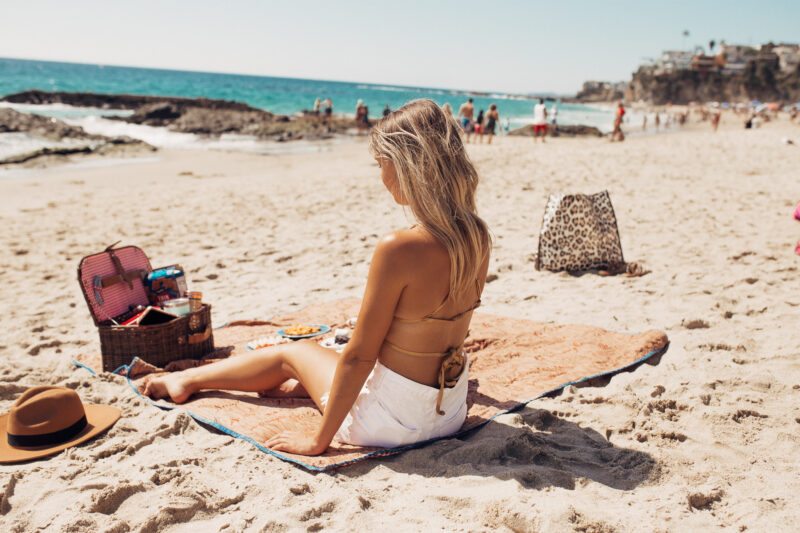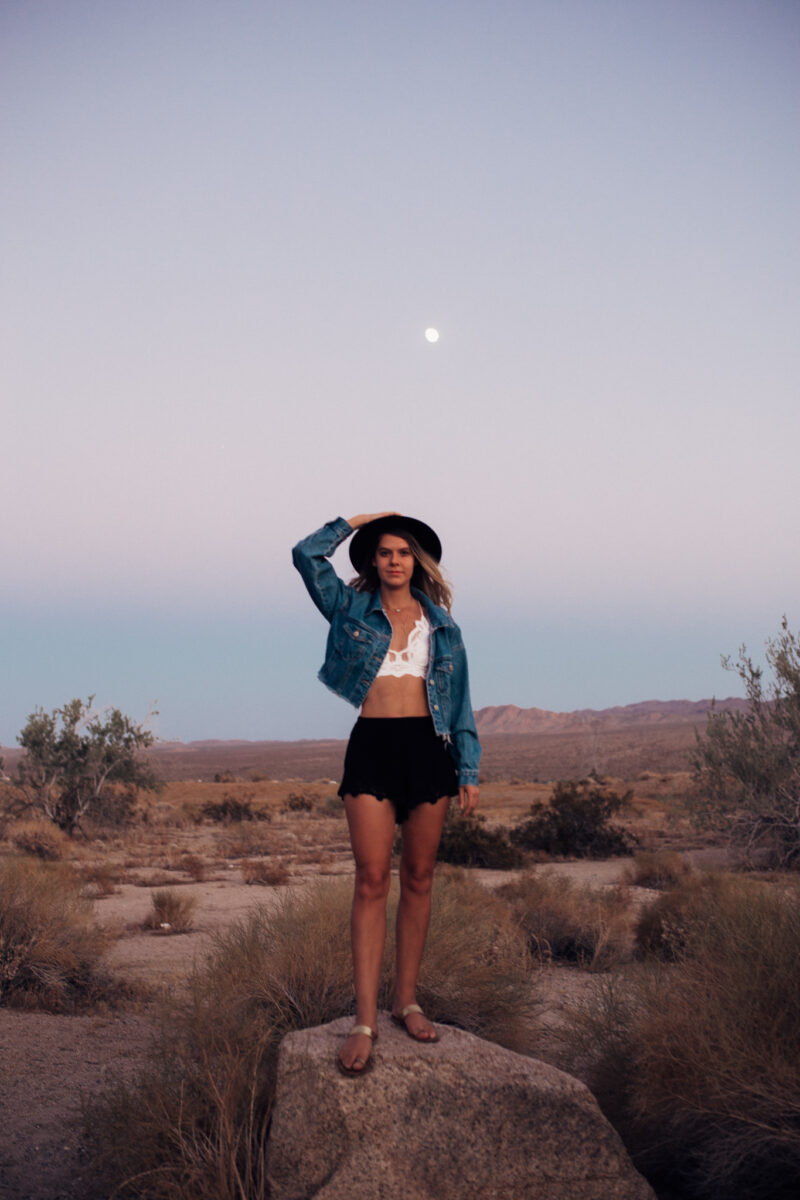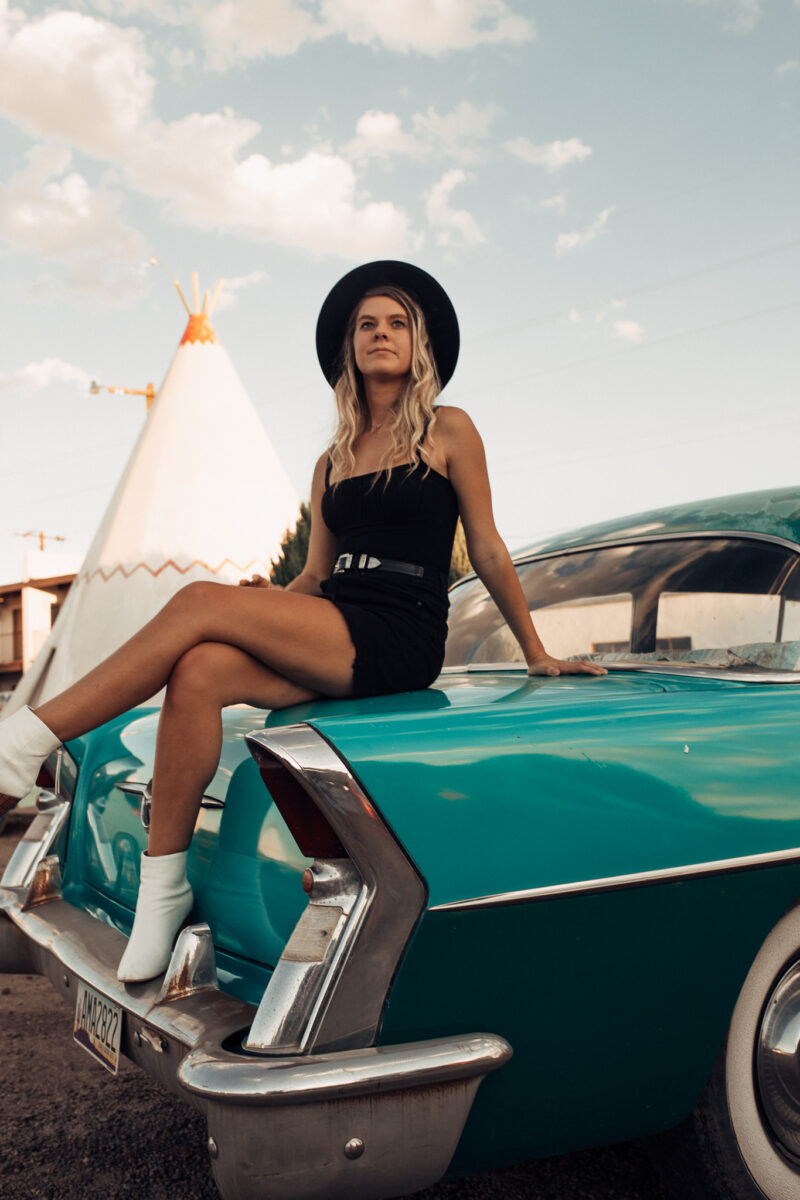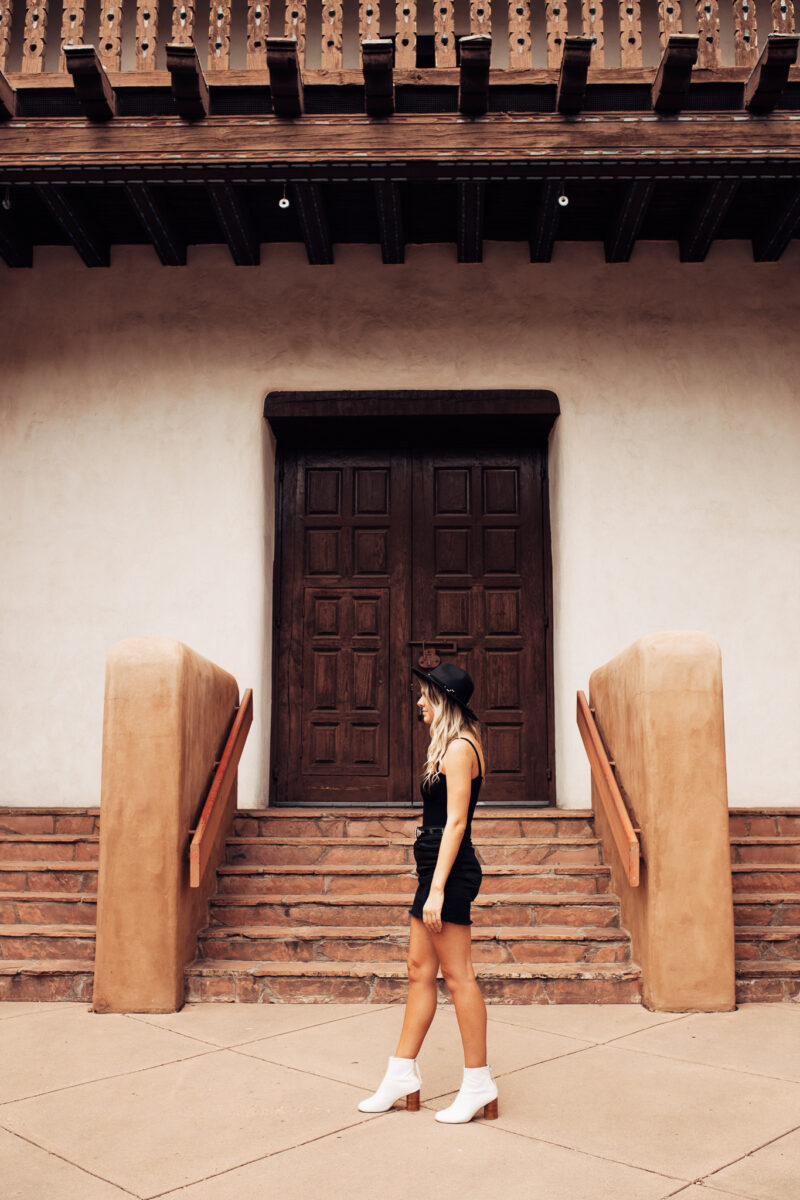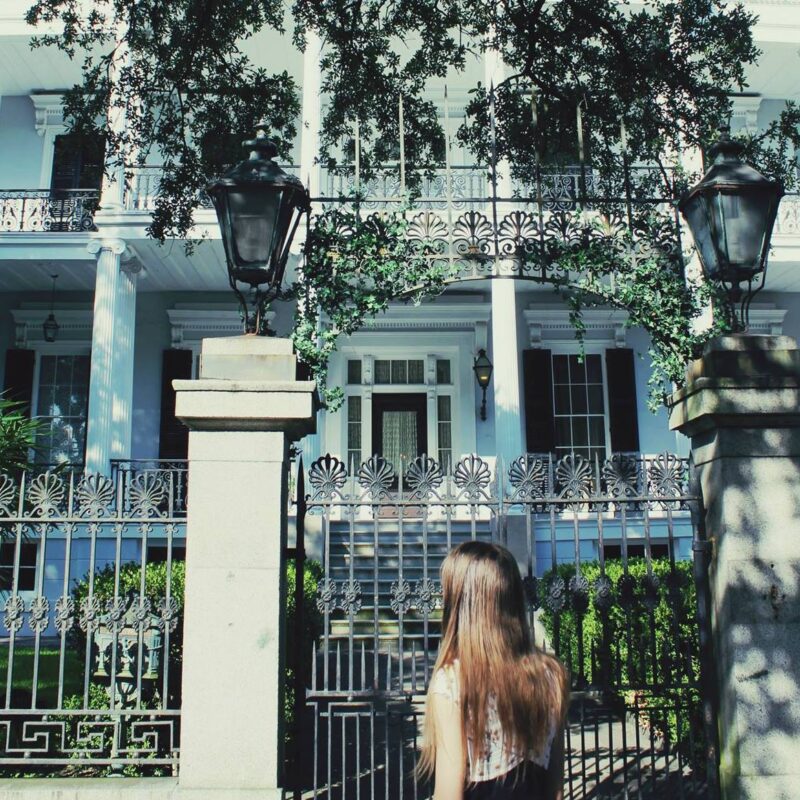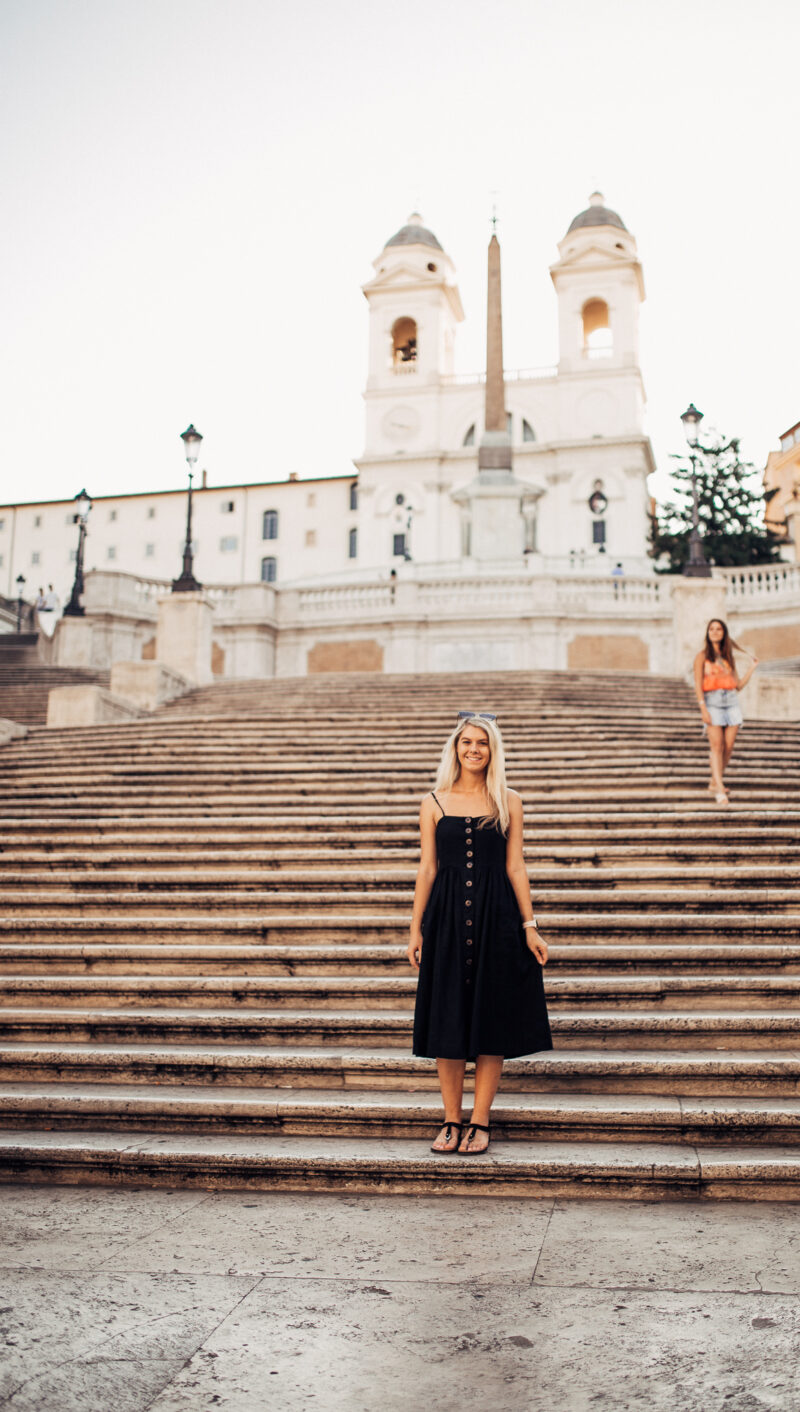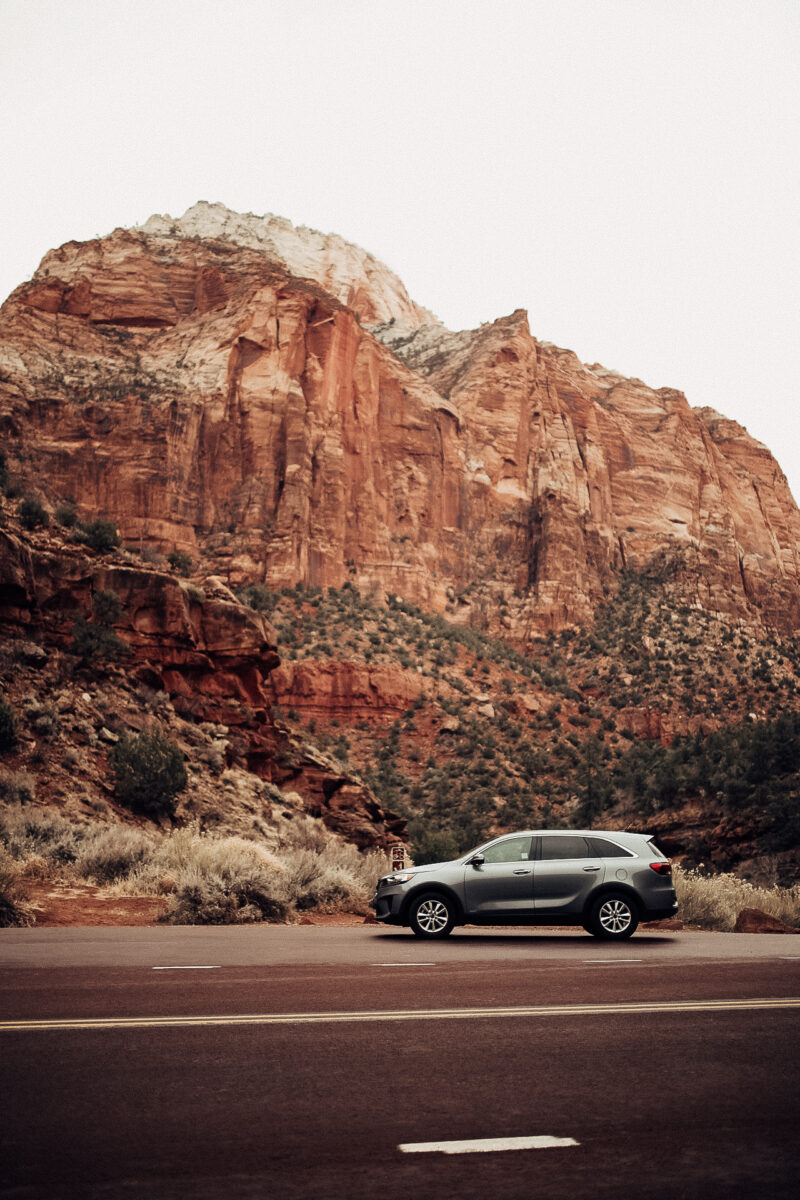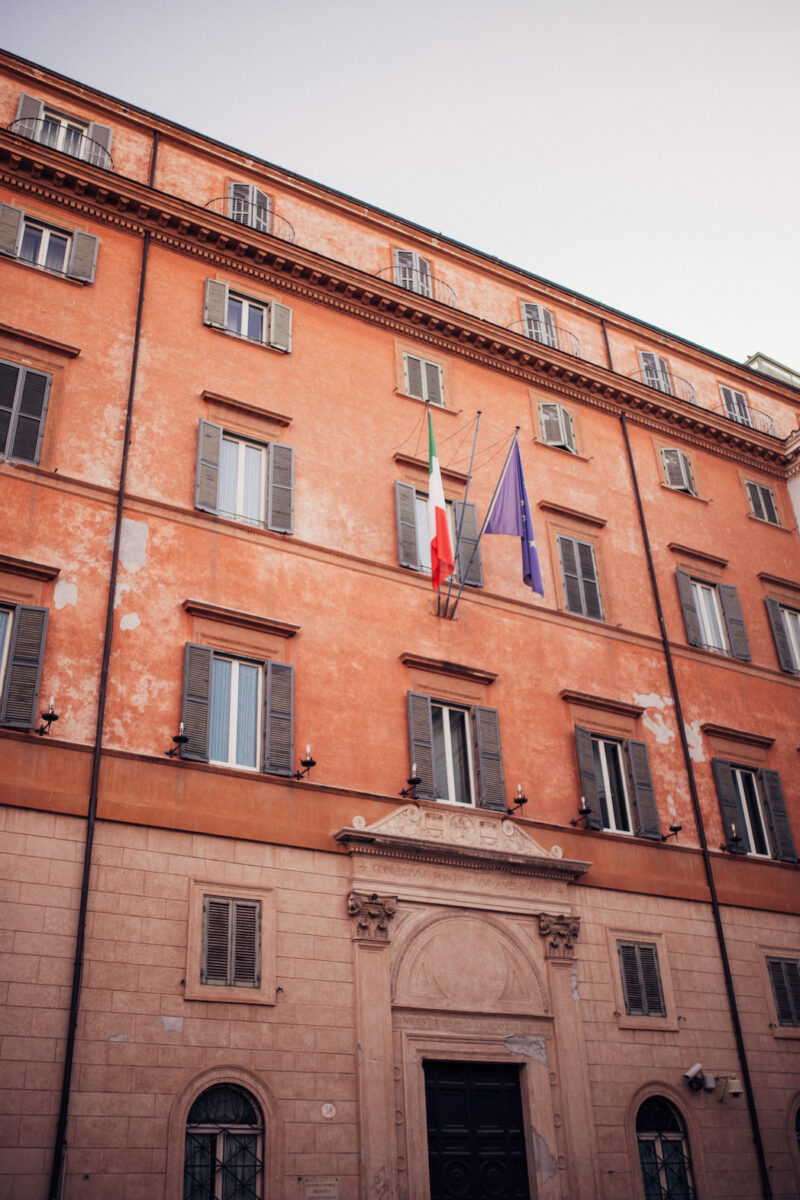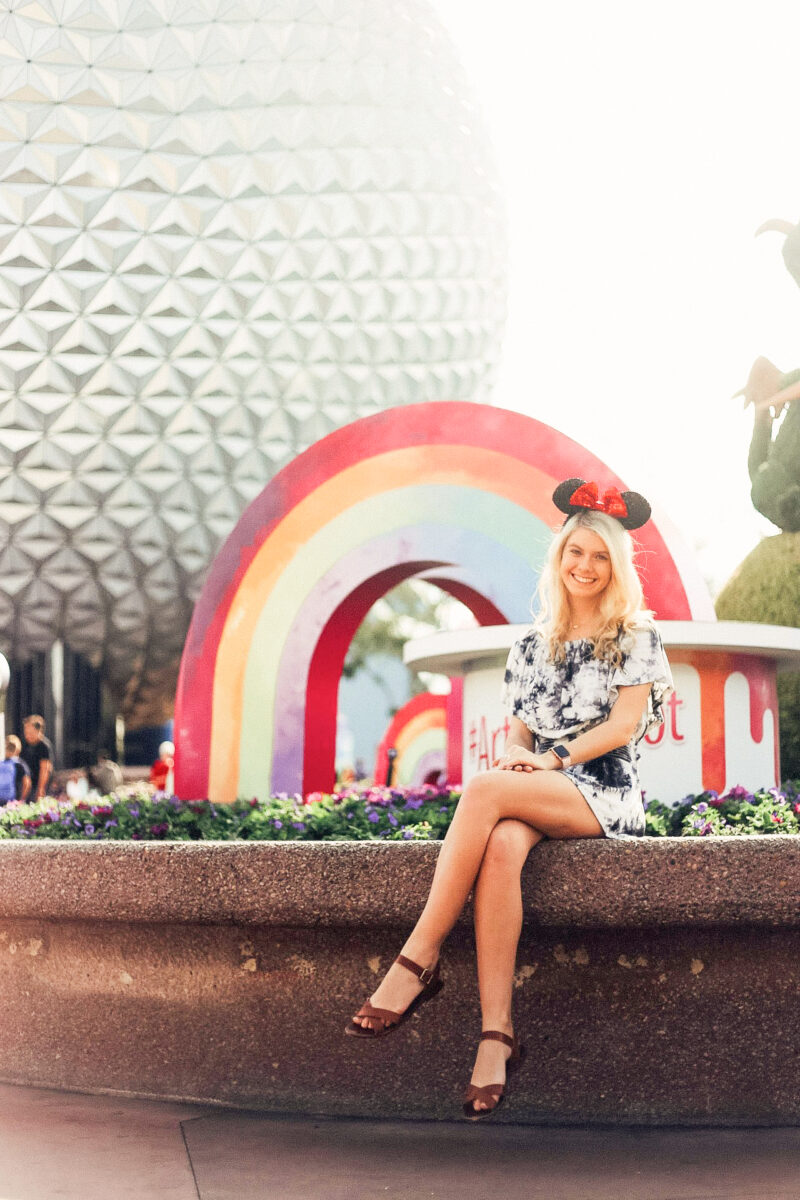Happy Friday! I’m excited to share another Tulum post today about the Mayan Ruins I visited on my trip. There is a wealth of choices for ruins in the Yucatan Peninsula with too many options to count. Since my trip was short, I knew I would only have time for one major ruins site. It can be overwhelming to choose just one since there are so many unique ruins that all offer something different. When surveying my options, I soon found out that Chichen Itza was two hours away and an all-day adventure. When looking closer to Tulum, I had trouble finding historical information about the Tulum Ruins without booking a tour. As a hidden gem with a tranquil setting and fewer tourists, Coba was the obvious best choice for my itinerary.
Located about 45 minutes outside of Tulum Pueblo, Coba offers one of the most authentic Mayan Ruins experiences. All of the ruin sites exist deep in the jungle, and archaeologists have only excavated 2 percent of the 6500 buildings. Coba also has one of the only pyramids that you can still climb—a lucrative proposition given that most Mayan Ruins sites don’t allow this anymore.
Before you reach the ruins, you should get a taste of Coba Pueblo. There are some authentic waterfront restaurants and artisan shops selling dreamcatchers on the lake, Laguna Coba. It makes for a good photo spot and place to stretch your legs after the drive from Tulum or Cancun.

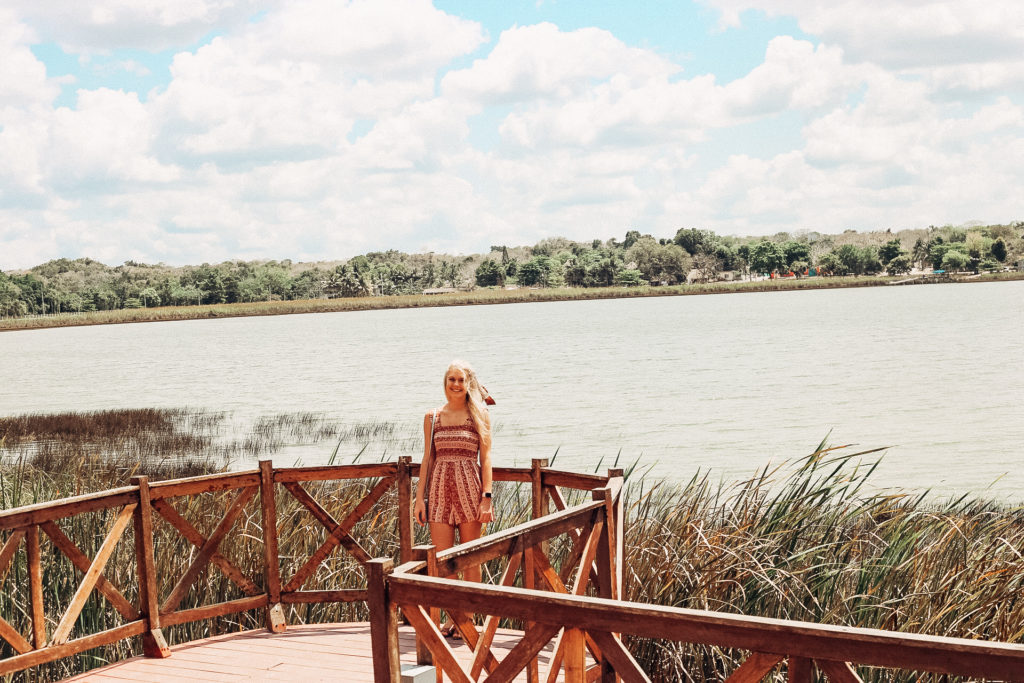
Mayan History of Coba
Before I launch into tips for visiting the ruins, here’s some important background about the history of Coba. It may be lesser known to the public than its famous neighbor, Chichen Itza, but Coba (or “waters stirred by the wind” in the Mayan language) was once one of the most important and powerful Mayan cities. Mayans first started settling there in 100 A.D. (likely due to its strategic location between two bodies of water—Laguna Coba and Laguna Macanxoc).
It was a dominant city-state between 200 and 600 A.D. By the 8th century, Coba was home to over 50,000 people. Coba is known as the hub for the Mayans’ complex road system of sacbe (white roads) that connect Mayan city-states for commerce and travel. Moonlight illuminates these roads at night, allowing the Mayans to travel in the dark while transporting goods. The city covers 31 miles, a lot larger than other Mayan sites, but remains largely unexcavated in the jungle. Coba is very unique because most Mayan Ruins, like Chichen Itza, are composed of just one site. But Coba includes multiple sites spread out and connected by sacbe in the jungle.
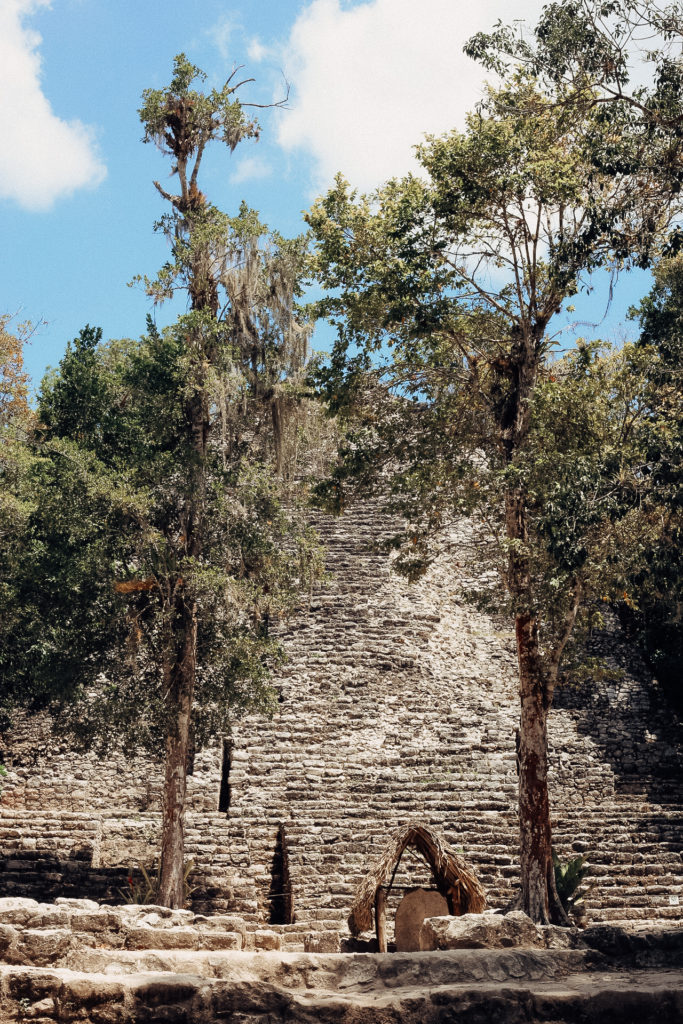
Coba was a trade hub that had contact with southern Mayan cities as close as Tulum and Xel-Ha and as far away as modern-day Honduras. Coba fell to the power of Chichen Itza in the 9th century, followed by the collapse of most other Mayan cities in the area. The city was eventually abandoned in the 15th century, likely due to Spanish settlers. Not much was known about Coba until modern times when the site was excavated in 1920 after the Caste War of Yucatan.
What you need to know before you visit Coba
- Arrive early around opening time (8:00am) to avoid heat and crowds. I visited around 2:00pm, and it gets very muggy in the jungle at that time of day. You’ll also have a lot fewer people in your shots by visiting early!
- Admission is currently $65 pesos (or $3.39)
- The ruins consist of three sites that are open to the public. Visit them in this order for the best experience: Coba Group, Macanxoc Group, and Nohoch Mul.
- The sites are spread out—bring your walking shoes! It’s over a four-mile walk between them.
- You can rent a bicycle for $50 pesos ($2.61) or ride on a bicycle taxi for $100 pesos roundtrip ($5.22) plus a tip. I opted to walk because I like the exercise, but it’s easier to cover more ground with the bicycle taxis. Some people choose to take them to the sites and walk back to the entrance to save some money.
- Coba is remote. It’s easiest to hire a private taxi from Tulum to the ruins, but it’ll cost you around $500 pesos each way ($50 total). You can also take the ADO buses, but it’ll take longer to get there. Keep the timetable in mind to avoid missing the last pick-up time.
- Consider planning a day trip here—there are plenty of other activities nearby, like cenotes, wildlife tours and zip-lining excursions.

One of the first sites you’ll see is the Temple of the Church, the second-largest pyramid at Coba. You can’t climb this pyramid, but the peak offers a beautiful view of Laguna Maxcanxoc.
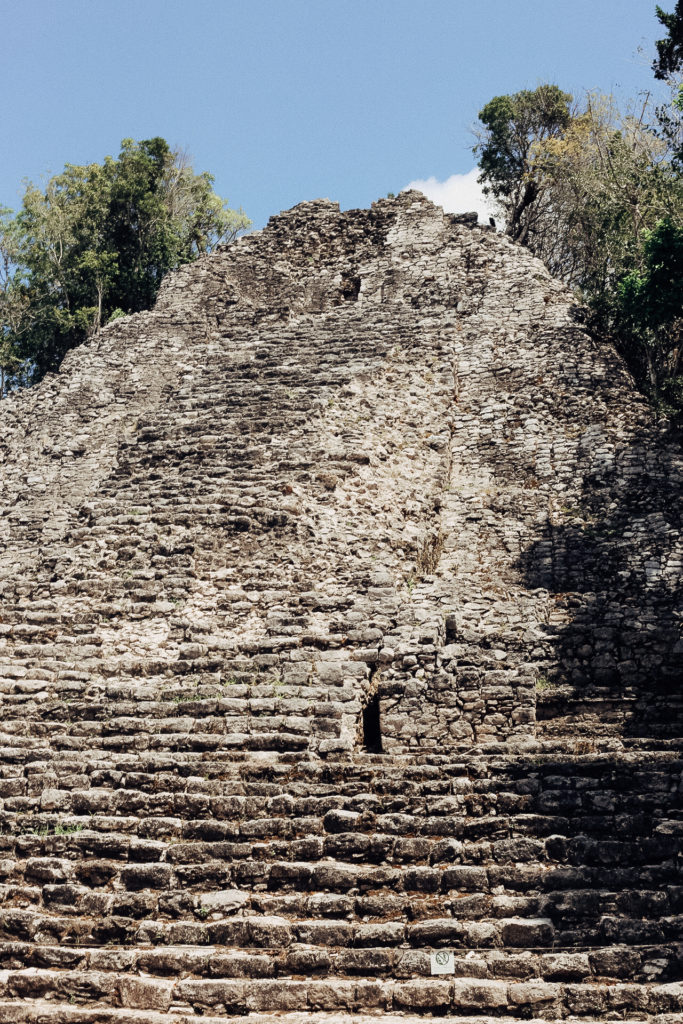
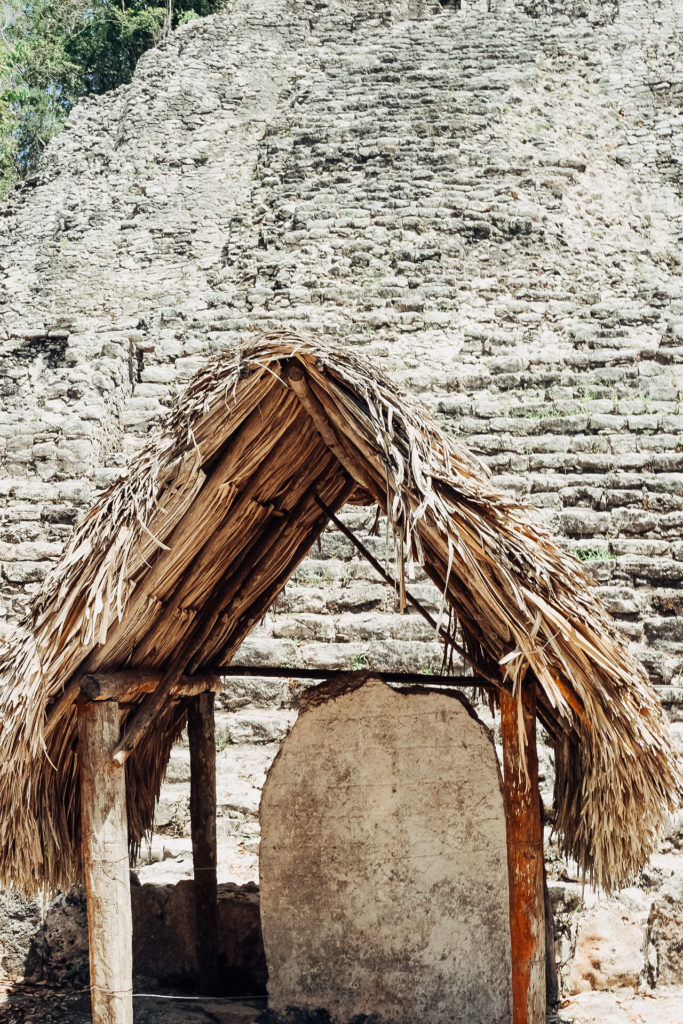
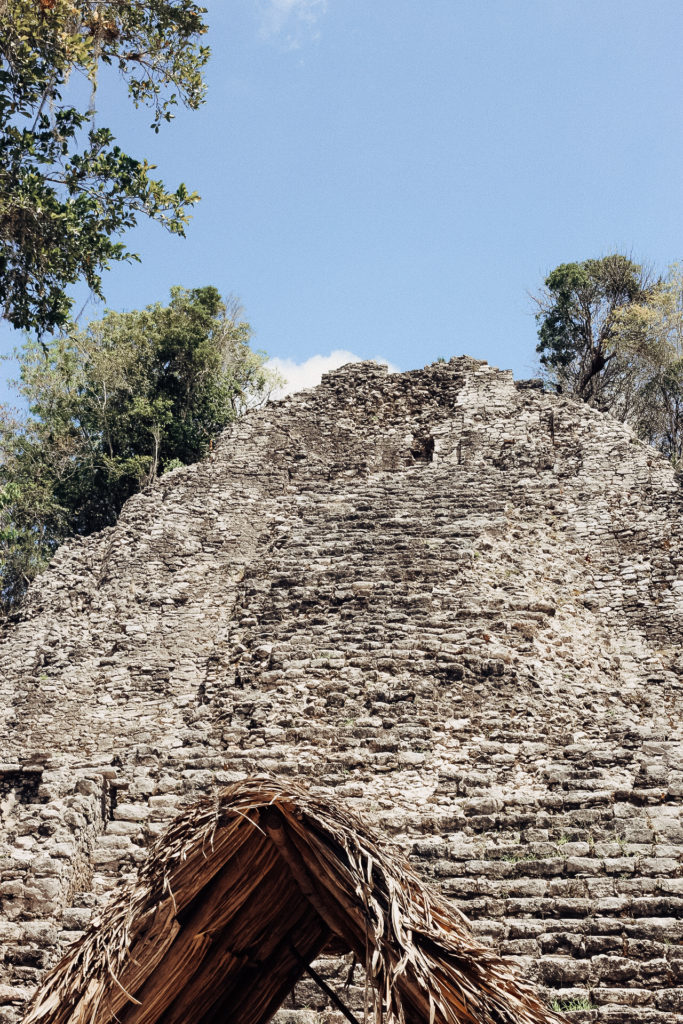
Coba also features something very unique to the Mayans—their ball courts. Inhabitants of the city used to play a game called “pitz” where players had to hit a leather ball into a hoop without using their hands or feet. The game held spiritual significance to the Maya and was played as a show of devoutness to the gods, where the losing players were ritually sacrificed.
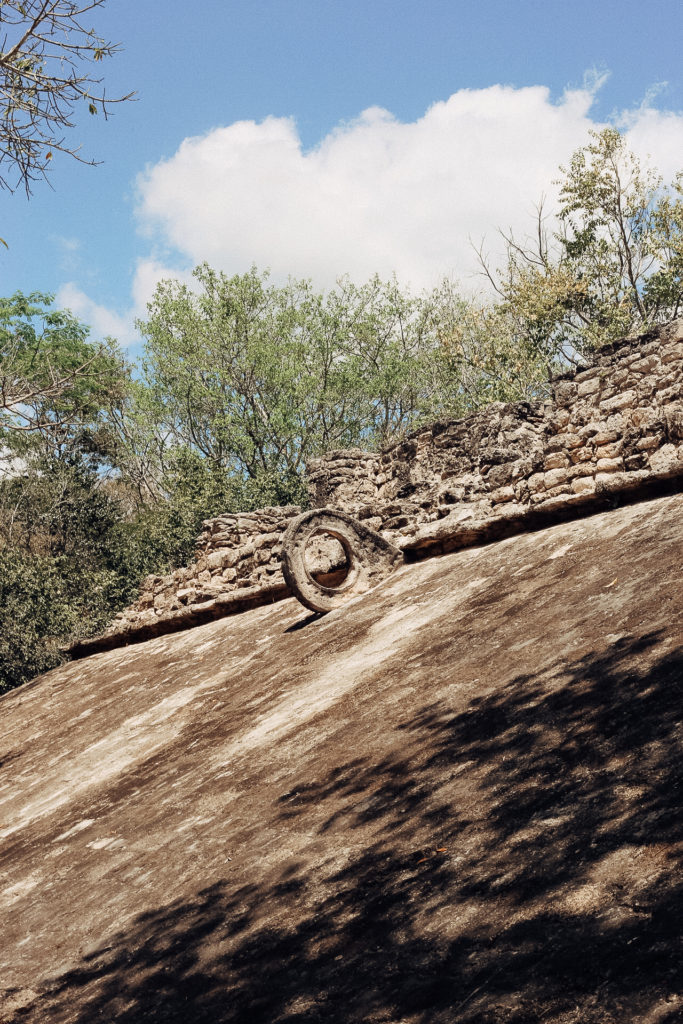
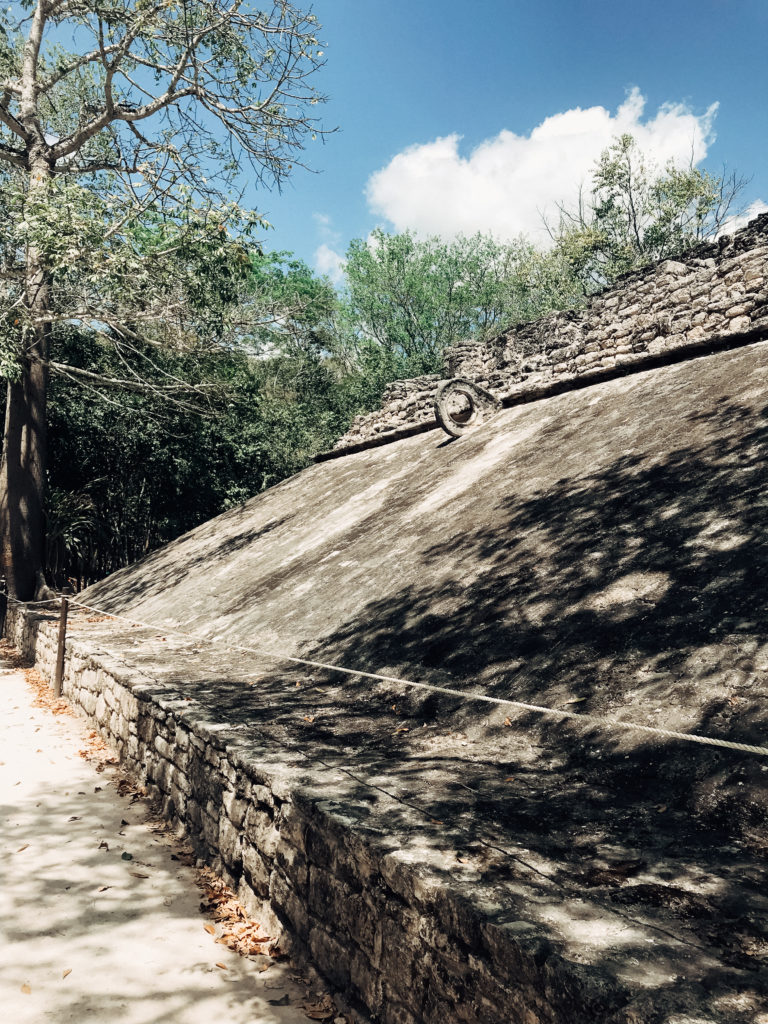

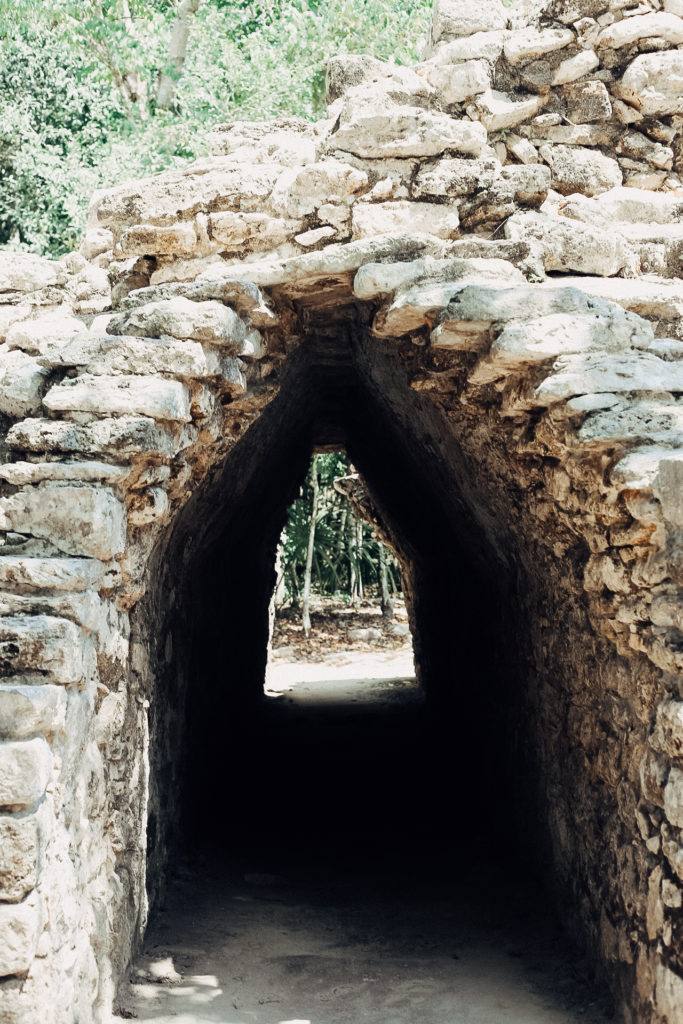
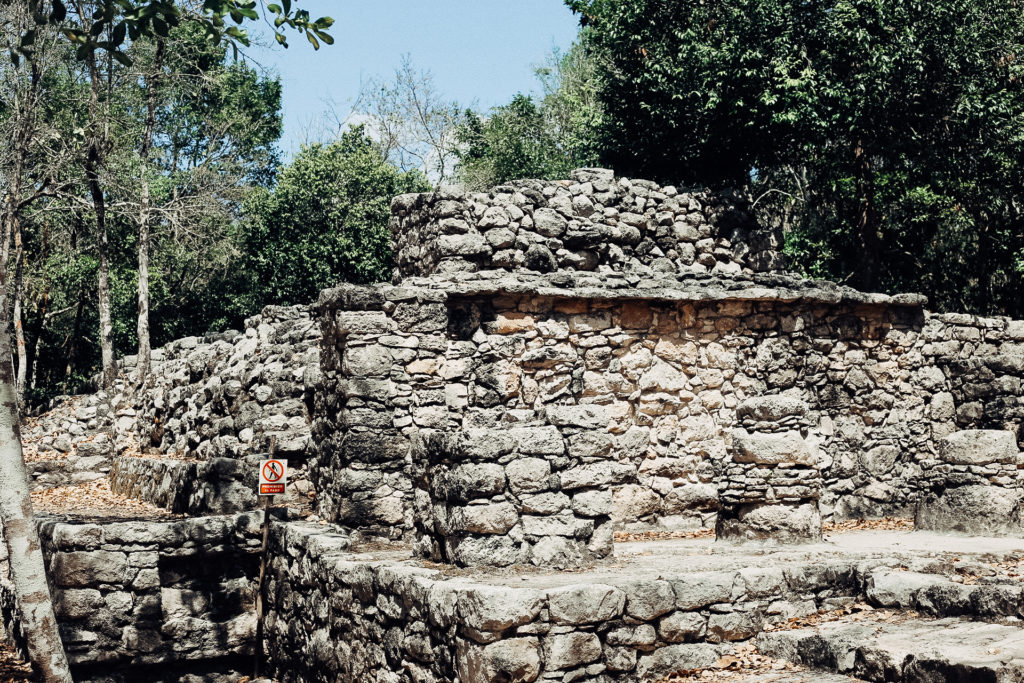
Stone slabs or “stelae” (pictured below) show glyphs of Coba’s history and major events that happened during the course of the Mayan civilization. Most of them are illegible now, but archaeologists use stelae to learn about the history of Mayan culture.
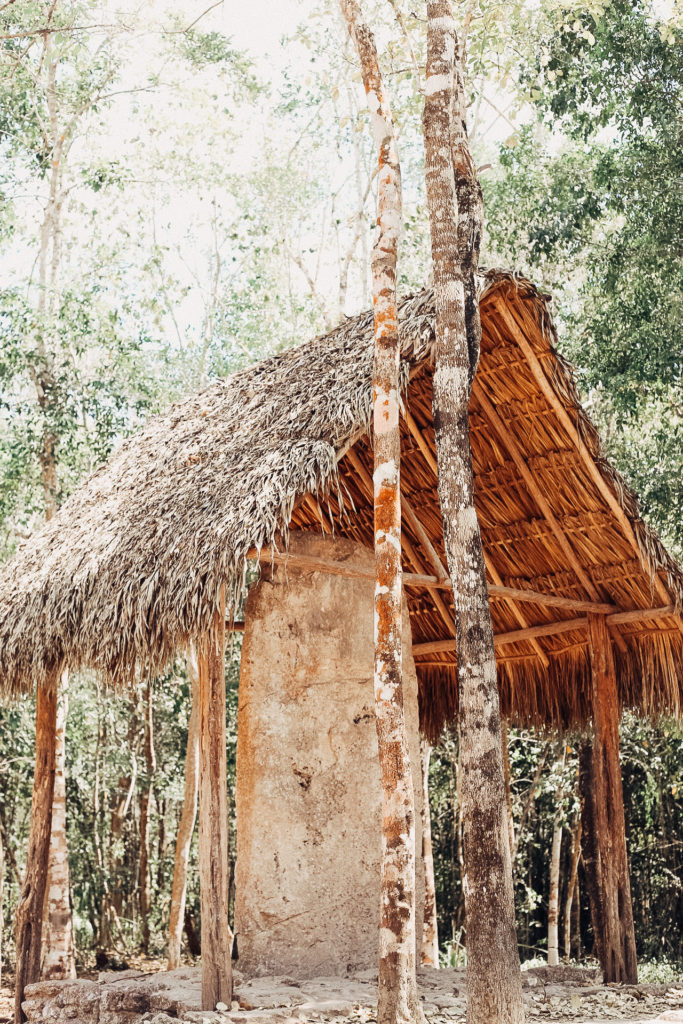
The final stop on your visit should be the main attraction: Nohoch Mul (or “large hill”). Standing at 137 feet high, this is the tallest Mayan pyramid in the Yucatan Peninsula (and the only one you can still climb!). It’s a steep climb to the top at 120 steps, but the view is well worth it. The stones are quite slippery, so there’s a safety rope to hold onto as you climb. You’ll need to shuffle down each step on the way back—the steps are too steep to walk straight down. That’s why in most pictures of Coba, you’ll see people sitting or crawling down steps. Better safe than sorry 🙂
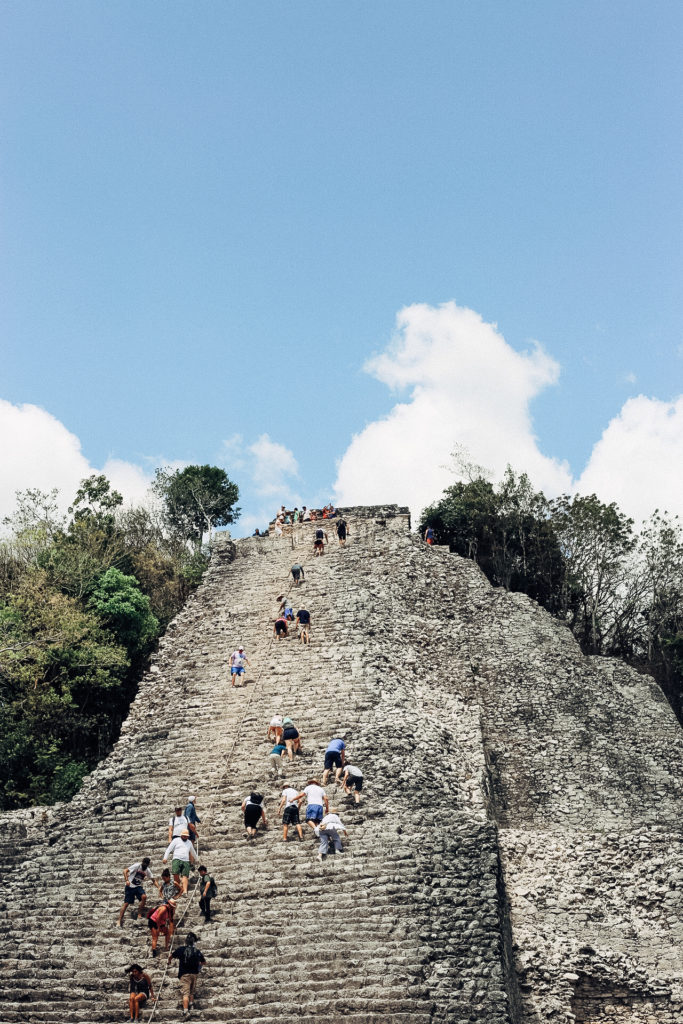
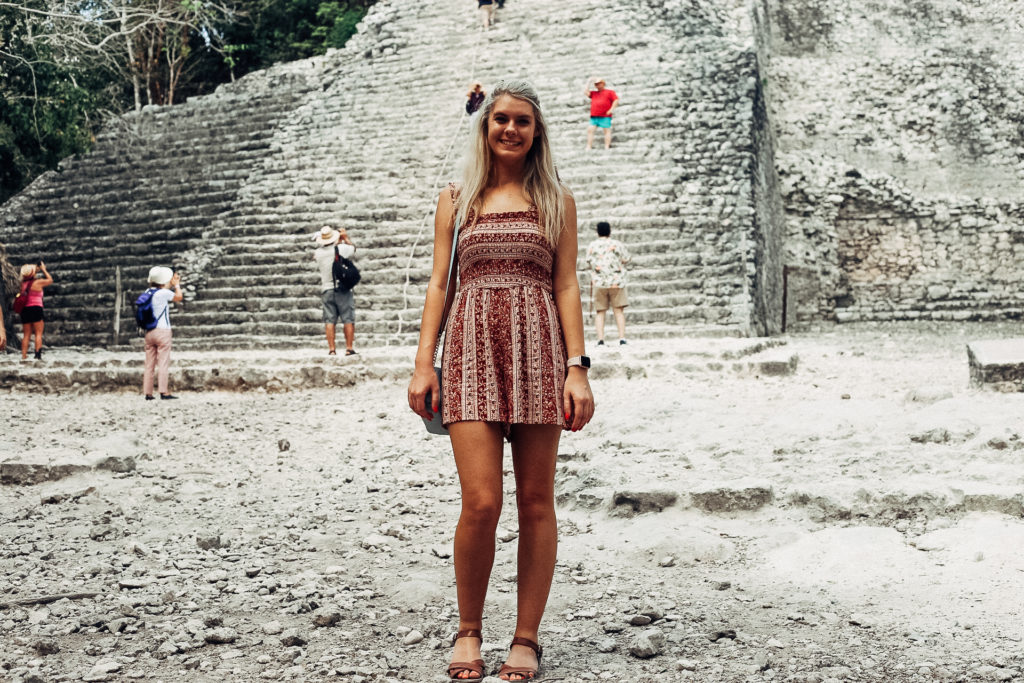
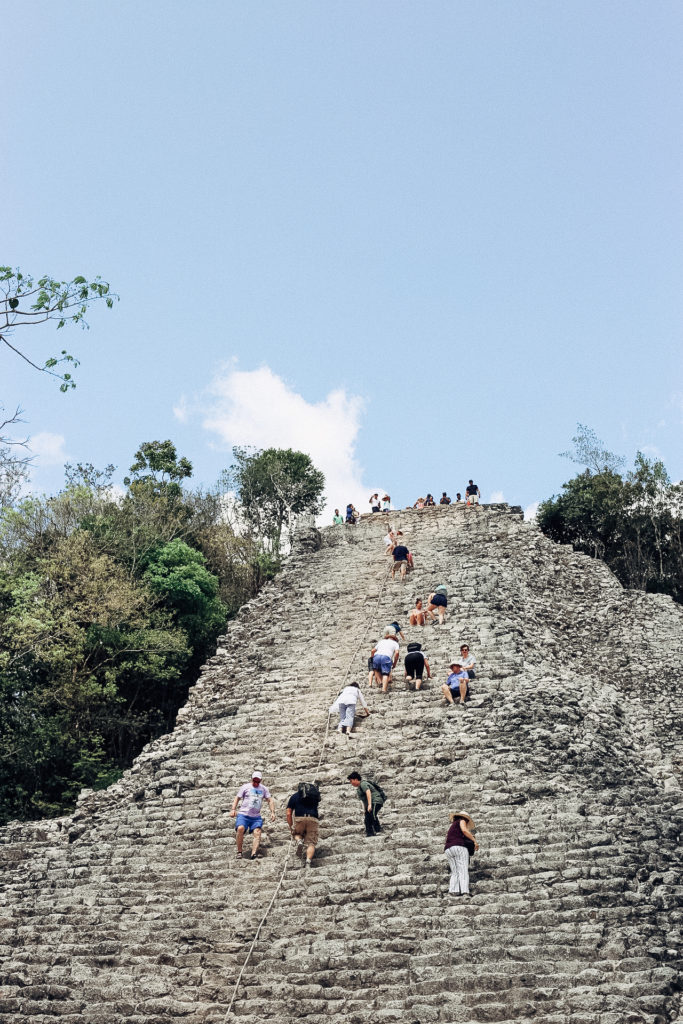

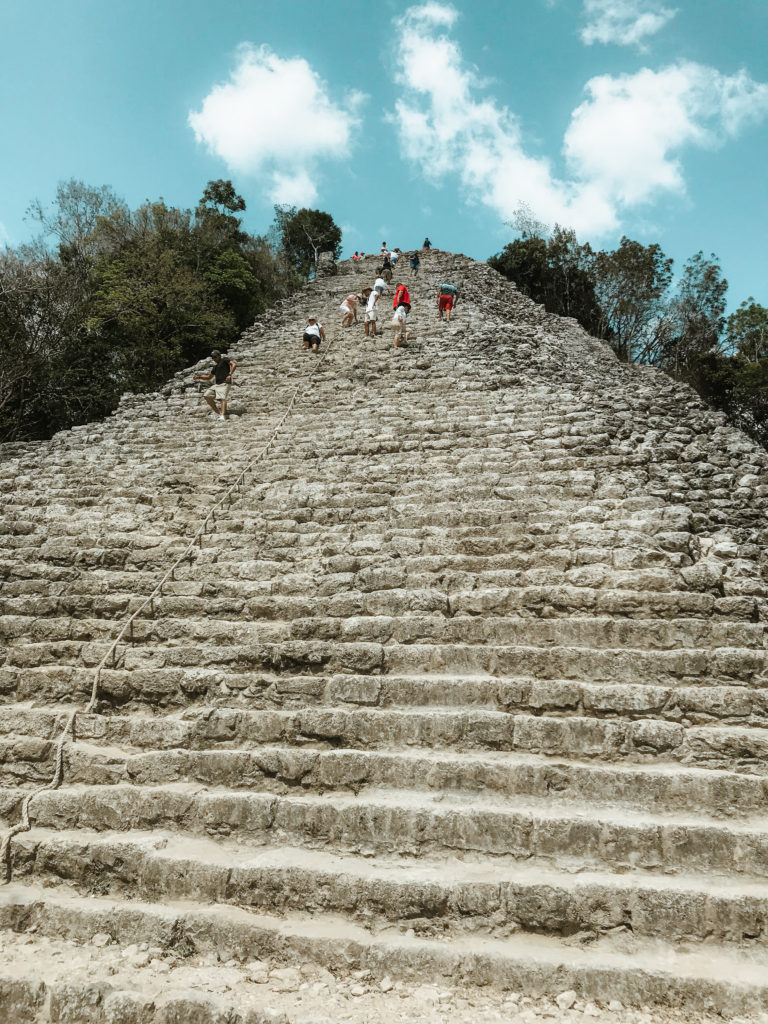
At the peak of the pyramid, the ruins reward you with a stunning panoramic view of the jungle. It’s hand-down one of the most beautiful places I’ve ever been and is so worth the trip. Mayan high priests in Coba used to look over the jungle and speak from the top of Nohoch Mul because of how far sound can travel from up there. You can also see the lagoons and other pyramids from this vantage point.
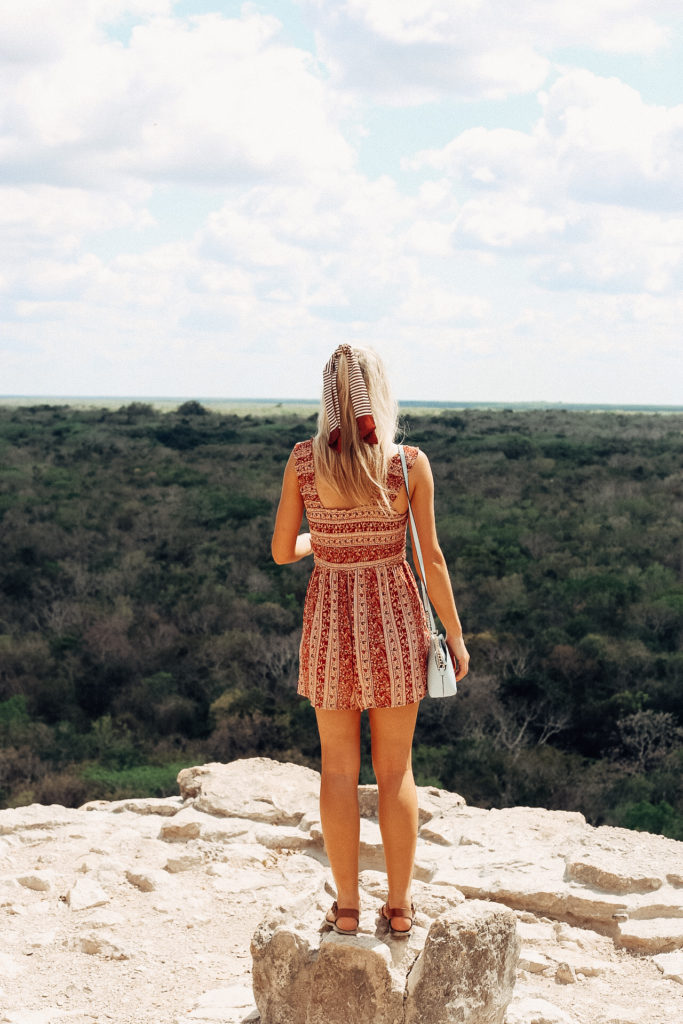
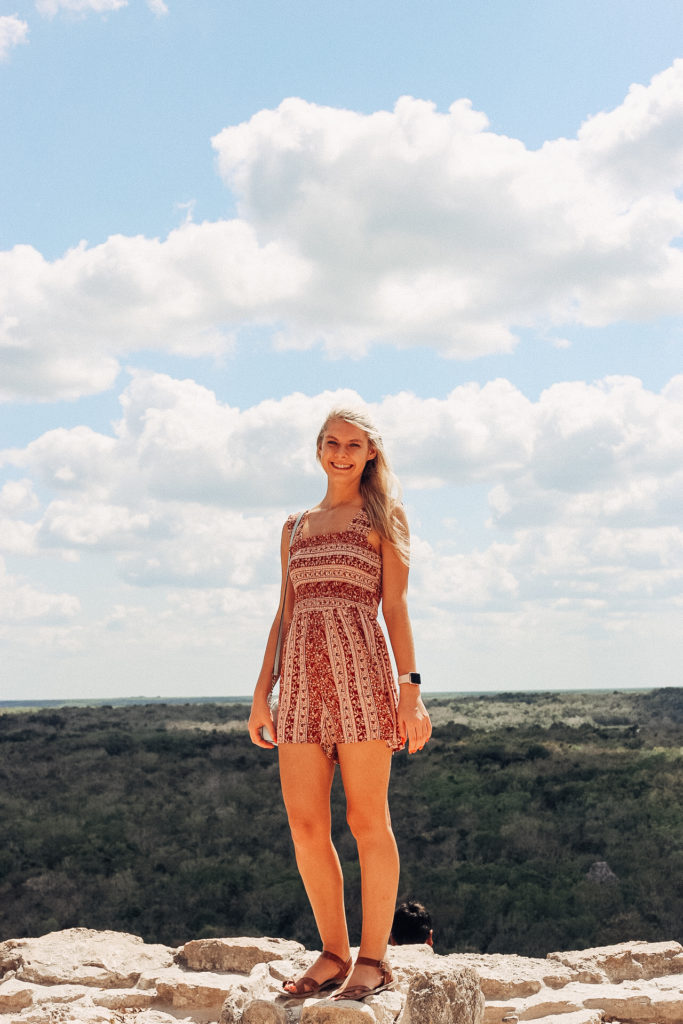
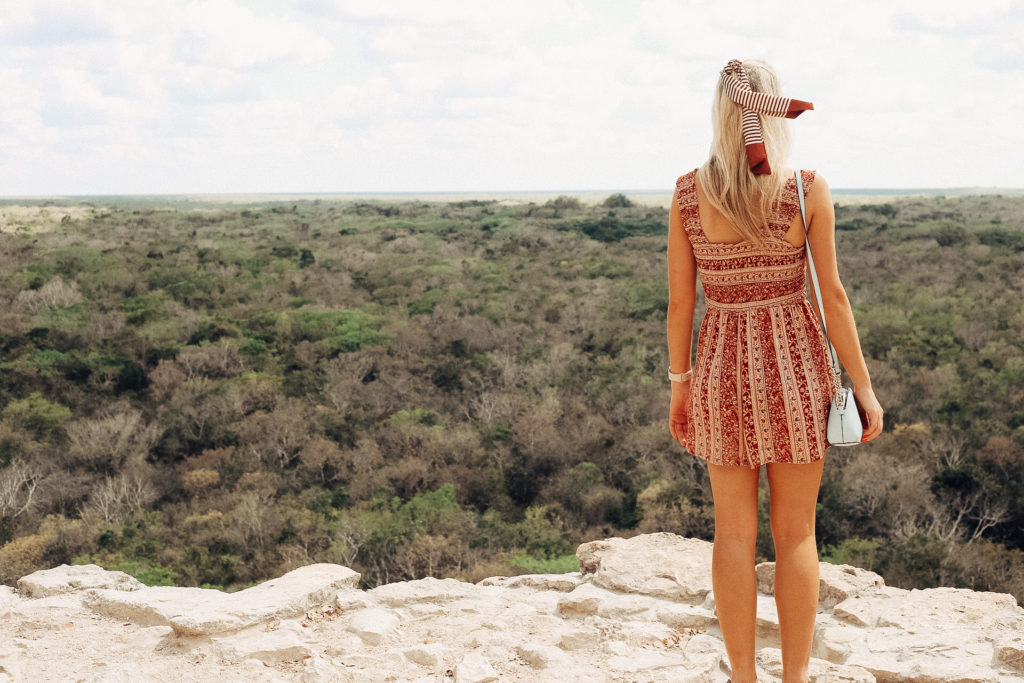
The view is breathtaking, but there’s not a lot of room at the top, so I definitely recommend getting there early. I had to wait a while to get photos without any people in them. For an authentic Instagram vs. reality moment, compare the picture above to the one below and you’ll see what I mean.
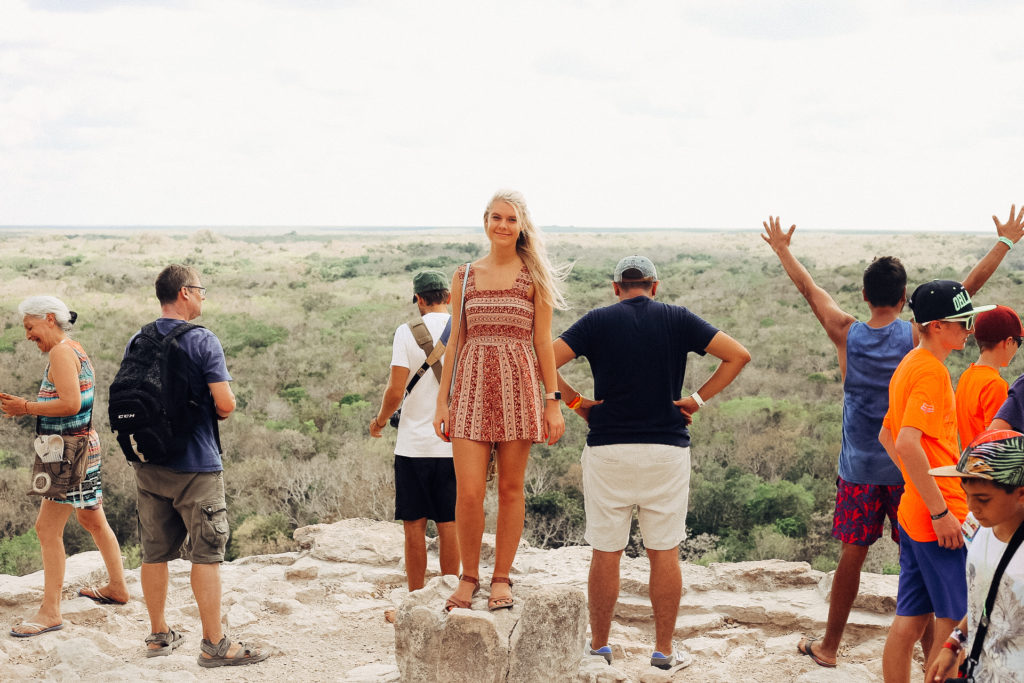


And that’s a wrap on my guide to Coba! I hope you learned something and that you’ll consider visiting this magical place on your next trip to the Yucatan. I also highly recommend visiting the other Mayan Ruins that I ran out of time for on my itinerary. Chichen Itza (one of the New Seven Wonders of the World), the Tulum Ruins (beachfront on the Caribbean Sea) and Chemuyil (part of the Sian Ka’an biosphere, a UNESCO World Heritage Site) are all worth a visit.
Pin It!

For an in-depth look at Tulum, visit my Tulum Travel Diaries here:
Tulum Travel Guide | Akumal Turtles Snorkeling Adventure | Gran Cenote | Exploring Coba Mayan Ruins in Mexico | Sunset Photoshoot on Tulum Beach
